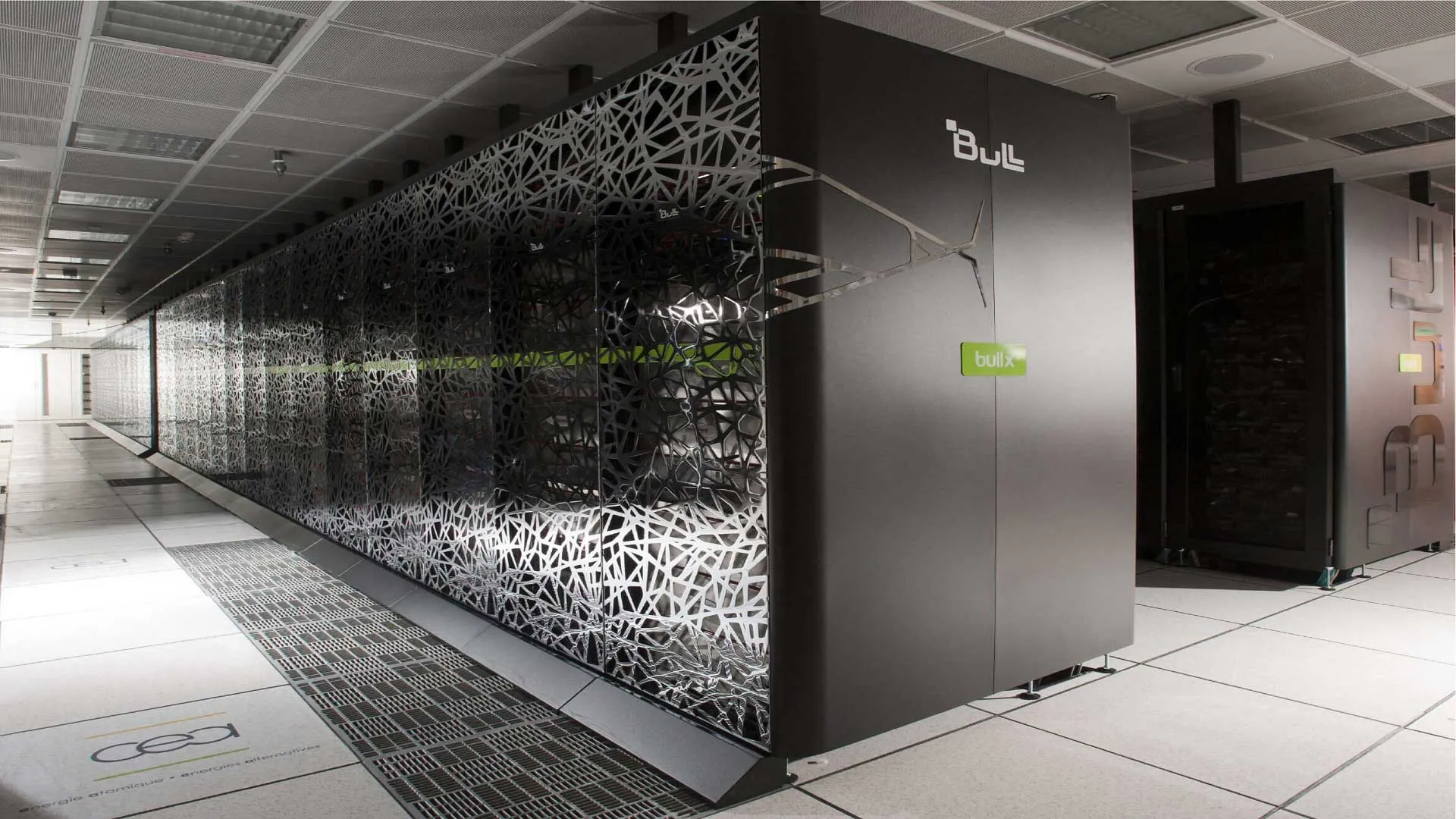Ever since French citizens Pierre and Marie Curie discovered the radioactive properties of radium in 1898, nuclear research has been a driving force for technological innovation in France. The country’s atomic energy commission, the Commissariat à l’Energie Atomique et aux énergies alternatives (CEA), was established by General Charles de Gaulle after the Allied victory in World War II with the goal of pursuing nuclear applications in energy, medicine and defense.
The CEA/DAM (Military Applications Division) has since developed into one of the largest scientific computing complexes in Europe (one supercomputer used for defense, two others for industrial partners and researchers throughout the region), with more than 150 engineers working in the fields of software development, scientific computing, and computer architecture and operation.
Test ban spurs the use of simulation
As one of the three nuclear powers in NATO (along with Britain and the U.S.), France stopped real-world testing of its arsenal in 1996. However, to ensure that the country’s nuclear deterrent would remain effective into the future, the CEA/DAM committed to a simulation program that would deliver highperformance, petaflop-class computing to its users.
“Our goal is to ensure the reliability and safety of our nuclear defense system through the use of simulation,” says Max-André Darizcuren, deputy head of the CEA Sciences of Simulation and Information Department (DSSI). Darizcuren spearheaded a 2004 project for managing the lifecycle of weapons through computer-aided engineering. “The idea behind this program is that, once you validate a simulation model, fewer and fewer physical tests are needed,” he says.
The software code that CEA/DAM has used all along—for thermo-mechanical multiphysics simulation as well as accompanying studies on safety and security—is Abaqus FEA from Dassault Systèmes SIMULIA.
Abaqus proves its worth across the organization
CEA first began using Abaqus in two of its five research sites only, but was so impressed with the accuracy of simulation results and the benefits delivered to various projects that the software was adopted throughout the organization. “We were already using other Dassault Systèmes products (CATIA V5 and ENOVIA SmarTeam),” says Darizcuren, “so the acquisition of Abaqus Inc. by DS in 2005 provided a comfort level for further investment in the SIMULIA/Abaqus solution.
“We are committed to simulating all the processes involved in maintaining our deterrent,” he says. “We have our own proprietary software for specific capabilities, but Abaqus is among the rare commercial codes we use with it.”
“Abaqus helps us safeguarding the robustness of the ‘product’ throughout its lifecycle,” says Darizcuren. “This goes from theoretical studies to manufacturing, performance, even to dismantling.”
Abaqus helps us safeguarding the robustness of the ‘product’ throughout its lifecycle.
CEA/DAM’s earliest Abaqus simulations were largely 2D, and assumed axisymmetry of the product to keep model size down. However, test data demonstrated that the objects being simulated were not always axisymmetrical: asymmetric 3D models would more accurately capture the full picture in many instances.
Next move: supercomputing
CEA was clearly in need of more compute power in order to manage the broad range of advanced simulations that would capture all such data and realistically predict multiple phenomena (models could potentially contain more than 100 million degrees of freedom). Then in 2010 the organization purchased a TERA 100 supercomputer (from Bull) dedicated to the deterrence only. At that time, it was the most powerful machine in Europe (it’s still in the top 12 regionally, and ranks 35th worldwide).
CEA collaborated closely with SIMULIA in a project aimed at customizing the architecture for parallel computing to optimize the use of Abaqus on the TERA 100,. “We want to maximize the productivity of the hardware infrastructure available for Abaqus simulations,” says the CEA’s IT infrastructure technical manager Françis Belot. “The TERA 100 is well tuned for our own codes, which are very scalable (simulations often run on more than 4,000 cores) and the challenge was to develop the same level of performance with Abaqus on this particular machine over the long term.”
The project tuned the Abaqus code to the new machine environment, helped the team master to use Abaqus on the CEA/DAM infrastructure, determined the limits of model size on that infrastructure and optimized the number of cores used (generally between 64 and 256) per model type. Improvements have been realized in accuracy/validity of the models, multiscale intensive simulations, and increasing use of full 3D models.
The knowhow acquired operating TERA 100 is being shared across two other CEA supercomputers, one used for European research and the other for a dedicated industrial partner.
“We’ve now significantly increased the performance of Abaqus on the TERA 100,” says Darizcuren. “We’re achieving parallel computing on hundreds of cores on a regular basis, irrespective of the method of calculation used. This significantly reduces simulation time and enables CEA engineers to shorten their design cycles.
“We hope to maintain our technical collaboration with Dassault Systèmes in the future in order to ensure that CEA achieves the targeted models that are key for our program,” he says. “Going forward, it is clear that we will need Abaqus to scale on even more cores.”
To that end, CEA will be bringing a TERA 1000 machine online in 2017, a step on the road map to exaflop range. “The demand for increasingly powerful simulation is growing fast across every industry,” says Darizcuren. “From the success we are seeing with our collaboration with SIMULIA, we are certain that Dassault Systèmes will be identified as a key player in highperformance computer software in the future.”
